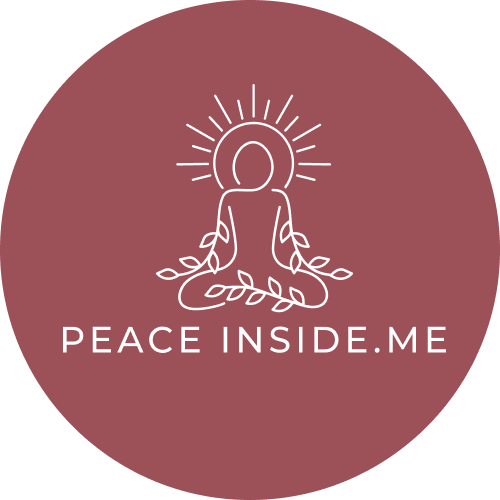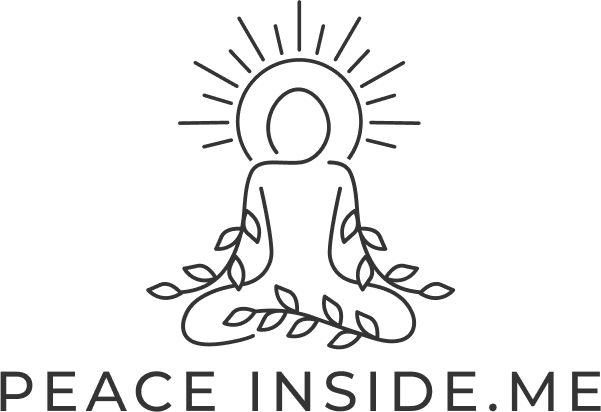peaceinside.me
Cognitive Behavioral Therapy: A Practical Path to Better Mental Health
Please note, this post is partially or fully sponsored and may contain affiliate links.
Mental health affects how we think, feel, and function every day. When we struggle emotionally, even small tasks can feel overwhelming. That’s where Cognitive Behavioral Therapy (CBD) can help. CBT is a powerful, evidence-based approach that helps people understand and change unhelpful thoughts and behaviors.
Unlike some traditional therapies that focus only on the past, CBT is action-oriented and solution-focused. It gives people practical tools to feel better, think clearer, and live more fully.
Let’s explore how CBT works, who it helps, and why it has become one of the most trusted forms of talk therapy.
Unlike some traditional therapies that focus only on the past, CBT is action-oriented and solution-focused. It gives people practical tools to feel better, think clearer, and live more fully.
Let’s explore how CBT works, who it helps, and why it has become one of the most trusted forms of talk therapy.

What Is Cognitive Behavioral Therapy?
Cognitive Behavioral Therapy is a structured, short-term therapy that helps individuals identify negative thought patterns, challenge them, and replace them with healthier ones. The goal is to change the cycle of thoughts, emotions, and behaviors that cause distress.
CBT is based on a simple but powerful idea: Our thoughts influence our feelings, and our feelings influence our actions. For example, if you think, “I’m a failure,” you may feel hopeless. That feeling might lead to avoiding work or social situations, reinforcing the belief that you're not capable. CBT helps break that cycle by teaching you how to reframe thoughts like, “I made a mistake, but I can learn and grow.”
How Does CBT Work?
CBT typically involves working with a trained therapist once a week for several weeks or months. The sessions are structured and goal-oriented. You’ll explore your thought patterns, identify triggers, and practice new coping strategies.
Key features of CBT:
Some common techniques used in CBT include:
Cognitive Behavioral Therapy is a structured, short-term therapy that helps individuals identify negative thought patterns, challenge them, and replace them with healthier ones. The goal is to change the cycle of thoughts, emotions, and behaviors that cause distress.
CBT is based on a simple but powerful idea: Our thoughts influence our feelings, and our feelings influence our actions. For example, if you think, “I’m a failure,” you may feel hopeless. That feeling might lead to avoiding work or social situations, reinforcing the belief that you're not capable. CBT helps break that cycle by teaching you how to reframe thoughts like, “I made a mistake, but I can learn and grow.”
How Does CBT Work?
CBT typically involves working with a trained therapist once a week for several weeks or months. The sessions are structured and goal-oriented. You’ll explore your thought patterns, identify triggers, and practice new coping strategies.
Key features of CBT:
- Collaborative: You and your therapist work as a team.
- Present-focused: It emphasizes current problems, not just past experiences.
- Skill-building: You learn practical skills to use in daily life.
- Homework-based: You often practice tools between sessions.
Some common techniques used in CBT include:
- Cognitive restructuring: Challenging negative or distorted thoughts.
- Behavioral activation: Encouraging positive activities to boost mood.
- Exposure therapy: Gradually facing fears in a safe, controlled way.
- Journaling: Tracking thoughts, feelings, and reactions to uncover patterns.
- Problem-solving: Learning how to cope with everyday challenges.

What Conditions Does CBT Treat?
CBT is one of the most researched forms of therapy. Studies show it is effective for a wide range of mental health issues.
CBT can help with:
The CBT Model: Understanding the Cycle
CBT often uses a triangle model to show the connection between:
For example:
Situation - A friend cancels plans
Thought - "They don’t like me."
Feeling - Sad, rejected
Behavior - Withdraw, stop reaching out
CBT helps you pause, examine your thought, and consider a more balanced perspective, such as:
“They might just be busy today. I’ll check in later.”
That small shift in thinking can lead to healthier emotions and actions.
CBT is one of the most researched forms of therapy. Studies show it is effective for a wide range of mental health issues.
CBT can help with:
- Depression
- Anxiety disorders (e.g., social anxiety, panic attacks, phobias)
- Post-traumatic stress disorder (PTSD)
- Obsessive-compulsive disorder (OCD)
- Eating disorders
- Substance use disorders
- Sleep problems
- Chronic pain
The CBT Model: Understanding the Cycle
CBT often uses a triangle model to show the connection between:
- Thoughts
- Feelings
- Behaviors
For example:
Situation - A friend cancels plans
Thought - "They don’t like me."
Feeling - Sad, rejected
Behavior - Withdraw, stop reaching out
CBT helps you pause, examine your thought, and consider a more balanced perspective, such as:
“They might just be busy today. I’ll check in later.”
That small shift in thinking can lead to healthier emotions and actions.

Why CBT Works
CBT is popular not just because it’s evidence-based, but because it’s practical and empowering. It teaches people how to become their own therapist—how to handle life’s ups and downs with greater awareness and resilience.
CBT benefits include:
Who Is CBT For?
CBT is a great option for most people—adults, teens, and even children. It’s especially helpful for those who like structure and are willing to actively participate in their own healing.
However, CBT may not be a fit for everyone. Some individuals with complex trauma or personality disorders may need additional approaches alongside CBT, like trauma-focused therapy or dialectical behavior therapy (DBT).
CBT is also available in group formats, online programs, and self-help workbooks. This flexibility makes it more accessible to people in different situations.
What to Expect in a CBT Session
Here’s what a typical CBT session might include:
CBT is popular not just because it’s evidence-based, but because it’s practical and empowering. It teaches people how to become their own therapist—how to handle life’s ups and downs with greater awareness and resilience.
CBT benefits include:
- Improved mood and emotional regulation
- Reduced anxiety and stress
- Better decision-making
- Greater self-confidence
- Stronger problem-solving skills
- Long-lasting results after therapy ends
Who Is CBT For?
CBT is a great option for most people—adults, teens, and even children. It’s especially helpful for those who like structure and are willing to actively participate in their own healing.
However, CBT may not be a fit for everyone. Some individuals with complex trauma or personality disorders may need additional approaches alongside CBT, like trauma-focused therapy or dialectical behavior therapy (DBT).
CBT is also available in group formats, online programs, and self-help workbooks. This flexibility makes it more accessible to people in different situations.
What to Expect in a CBT Session
Here’s what a typical CBT session might include:
- Check-in: How was your week? Did anything trigger strong emotions?
- Review homework: Talk about what you practiced since the last session.
- Focus topic: Work on a specific issue or thought pattern.
- Skill-building: Learn a new technique or coping strategy.
- Plan for the week: Set goals or tasks to practice until the next session.

CBT in Today’s World
With rising mental health needs, especially since the COVID-19 pandemic, CBT has become even more vital. Many therapists now offer teletherapy, and platforms like BetterHelp, Talkspace, and online CBT programs make support more accessible.
The World Health Organization reports that depression and anxiety increased by 25% globally during the first year of the pandemic (WHO, 2022).
CBT tools—such as reframing thoughts, breathing techniques, or mindful awareness—help people navigate uncertainty and stress in healthier ways.
With rising mental health needs, especially since the COVID-19 pandemic, CBT has become even more vital. Many therapists now offer teletherapy, and platforms like BetterHelp, Talkspace, and online CBT programs make support more accessible.
The World Health Organization reports that depression and anxiety increased by 25% globally during the first year of the pandemic (WHO, 2022).
CBT tools—such as reframing thoughts, breathing techniques, or mindful awareness—help people navigate uncertainty and stress in healthier ways.
Final Thoughts
Cognitive Behavioral Therapy is more than just talk—it’s a toolkit for emotional well-being. It gives people the power to change how they think, feel, and respond to life’s challenges.
Whether you're struggling with anxiety, recovering from trauma, or just want to build better mental habits, CBT offers a proven, practical path forward.
And perhaps the most empowering part? CBT teaches us that we’re not stuck with our negative thoughts. We can learn to challenge them, change them, and create a healthier, more hopeful life.
Sources:
Cognitive Behavioral Therapy is more than just talk—it’s a toolkit for emotional well-being. It gives people the power to change how they think, feel, and respond to life’s challenges.
Whether you're struggling with anxiety, recovering from trauma, or just want to build better mental habits, CBT offers a proven, practical path forward.
And perhaps the most empowering part? CBT teaches us that we’re not stuck with our negative thoughts. We can learn to challenge them, change them, and create a healthier, more hopeful life.
Sources:
- American Psychological Association. (2022). Cognitive Behavioral Therapy
- World Health Organization. (2022). Mental health and COVID-19
- Cuijpers, P. et al. (2020). The Lancet Psychiatry - Cognitive behavior therapy for depression: An updated meta-analysis
~
See a typo or inaccuracy? Let us know so we can fix it!
Sharing is caring ❤️
~
~
~
BECOME A PEACE INSIDER
Sign up for peaceinside.me information, inspiration, and specials.



